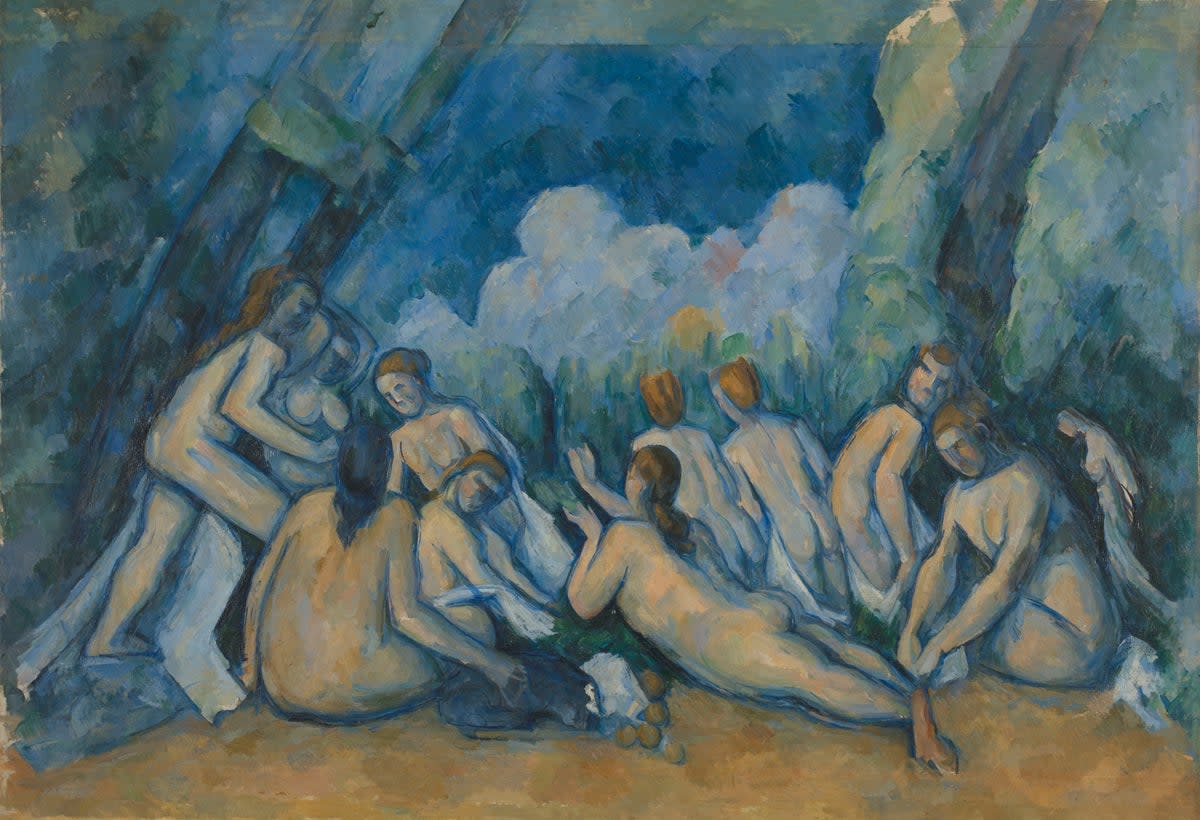Cezanne at Tate Modern review: the king of the fruit bowl is back and yes, he’s brilliant

Brian Sewell, this paper’s brilliant former critic, observed about the last big Cezanne exhibition in 1996, also at the Tate, that “people think Cezanne is important because they’re told he’s important.” He thought we should look at the pictures and make up our own minds.
It was good advice then and it’s good now. It’s easy to be overwhelmed by the veneration in which Cezanne was held – Picasso called him the “father” who protected those who followed him; Manet called him “the greatest of us all”; in his last years his retreat near Aix-en-Provence was a pilgrimage site for a succession of younger artists. Many of the greats, such as Matisse, owned his work.
This substantial exhibition demonstrates the radicalism of the man who promised to set Paris alight with an apple and who did indeed turn the contents of his fruit bowl into objects freighted with significance. Single handedly, he elevated the status of the still life, the humblest genre – into a compelling form.

Sometimes he did this subversively; he placed his skulls, the memento mori, on a floral carpet – or is it flowery drapery? – instantly transforming their macabre character. One of the finest is the Still Life with Plaster Cupid from the Courtauld, where the armless chubby statue, placed among the fruit and veg, has a backdrop of disconcerting planes which make it weirdly compelling.
You can see here those parallel diagonal or vertical brushstrokes, which gave his work its most distinctive character. But there’s a very different still life with a sugar bowl from the early part of his career where the paint is laid on so thick it stands off the canvas. And in his watercolours there’s a different approach again: altogether more delicate. Some of the sketches have an unexpected charm.
The effect the master had on his successors is not hard to find. As you enter the ‘Bathers’ room with the boy in his underpants with downcast eyes, or the group of lumpen women nearby, you think: “Hello, Picasso.”

But looking critically at the paintings, it occurs that any Dutch master of the 17th century painted better – that is, more accomplished – still lifes. As for his figurative painting it can be simply crude, as in the early oil sketches here. Contemporaries were struck by his painting Mrs Cezanne with green facial shadows, but I’m not sure if I were her I’d have cared for that picture myself. A more moving and striking portrait is that of a black man, Scipio, all muscled exhaustion, seen from behind.
This being the Tate, there are commentaries on some of the work by various artists. Of the “Forest Floor”, one ass asks, “Would there even be a Cezanne without colonialisation?” Yes, there would.
This exhibition is emphatically worth visiting (but when it’s over don’t forget the Cezannes in the Courtauld collection, just over Waterloo Bridge), simply because it is the largest and most comprehensive exhibition of the painters’ painter in London for over 30 years, and therefore merits attention. Moreover, there is no comparison between the luminous intensity and power of these paintings on canvas and digital reproductions. But as Mr Sewell said, judge the work for yourself.
Tate Modern, October 5 to March 12, tate.org.uk

 Yahoo Movies
Yahoo Movies 
